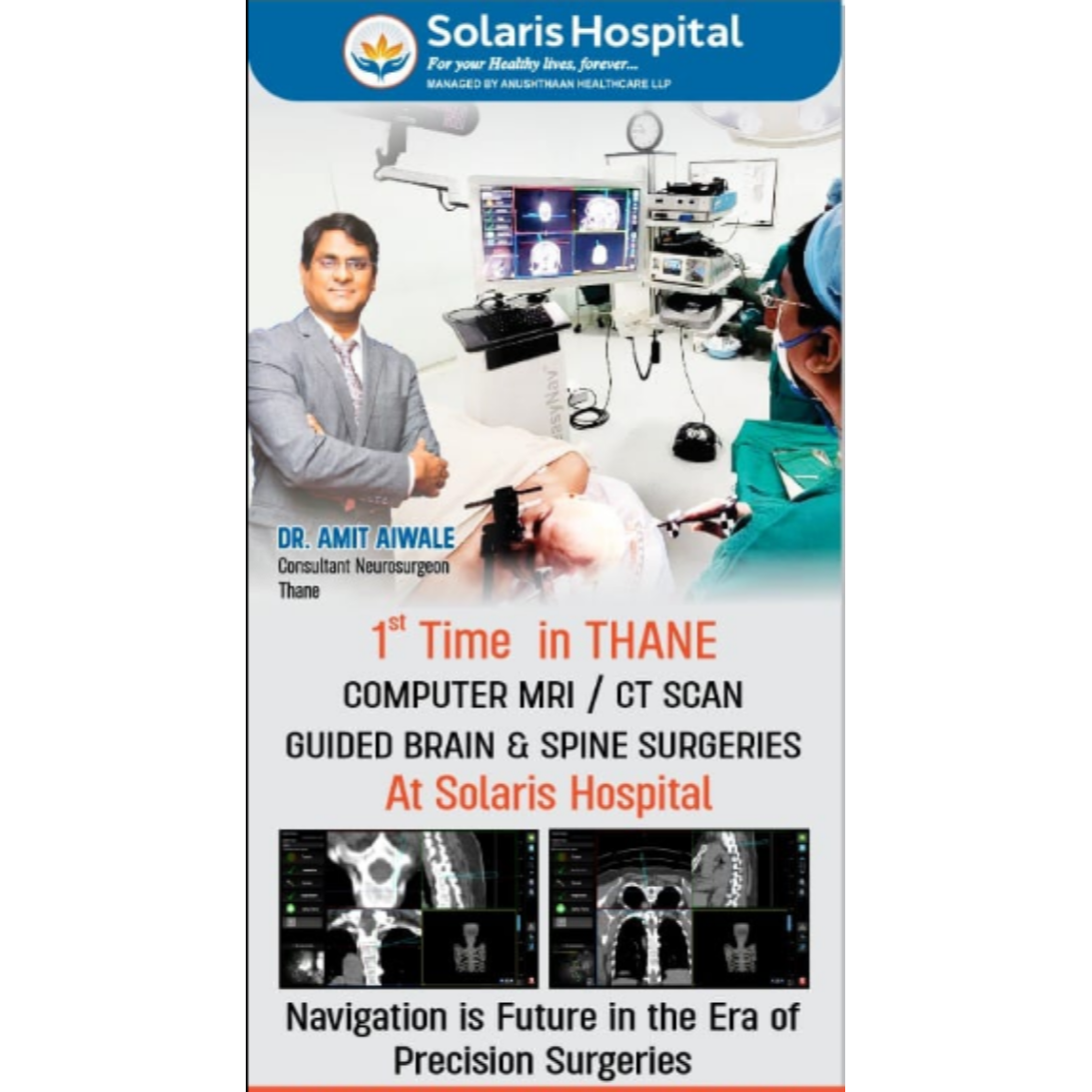+918048126686

This is your website preview.
Currently it only shows your basic business info. Start adding relevant business details such as description, images and products or services to gain your customers attention by using Boost 360 android app / iOS App / web portal.
# No 1 Spine Surgeon in Thane | # No 1 Spine Specialist in Thane |

Computer navigation guided brain and spine surgery, also known as neurosurgical navigation or neuronavigation, is a technique used to assist surgeons in performing complex procedures on the brain and spine. how computer navigation guided brain and spine surgery works: Preoperative Imaging: Before the surgery, the patient undergoes imaging scans such as MRI (Magnetic Resonance Imaging) or CT (Computed Tomography) scans. These scans provide detailed images of the patient's brain or spine, allowing the surgeon to identify the target area and any abnormalities that need to be addressed. Image Registration: The imaging data is then loaded into the computer navigation system. The software matches the patient's actual anatomy with the images from the scans, creating a three-dimensional (3D) virtual model of the patient's brain or spine. Reference Frame/ Point Placement: To establish a reference point, a frame with reflective markers or a specialized device is attached to the patient's head or spine. These markers allow the computer system to track the patient's movements during the surgery and accurately correlate them with the preoperative images. Real-Time Tracking: Once the surgery begins, the computer navigation system tracks the position and movement of surgical instruments and the patient's anatomy in real-time. Specialized tools, such as infrared cameras or electromagnetic tracking systems, are used to monitor the position and orientation of instruments relative to the patient's anatomy. Surgical Guidance: The surgeon can visualize the patient's anatomy, including the target area, surrounding structures, and critical landmarks, on a computer screen or a head-mounted display. This visualization helps the surgeon navigate precisely and avoid vital structures during the procedure. Intraoperative Updates: During the surgery, the navigation system continuously updates the virtual model based on the tracked movements and instruments' positions. This ensures that the surgeon has up-to-date information about the current state of the patient's anatomy, even if there are minor changes or shifts during the procedure. Verification and Validation: Throughout the surgery, the surgeon can validate the accuracy of their instrument's position and orientation by referencing the virtual model and comparing it to the real-time imaging provided by the navigation system. This verification step ensures that the surgical plan is followed accurately. The benefits of computer navigation guided brain and spine surgery include: Increased precision: Enhanced safety: Improved visualization: Enhanced training and education: Faster Recovery and mobility:

